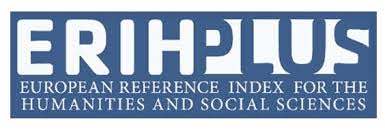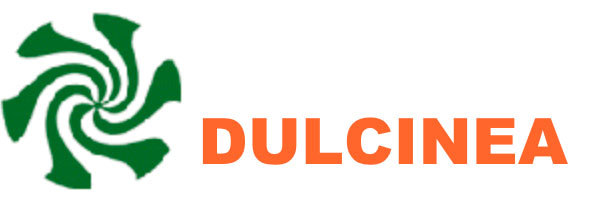Flesh, mirrors and acceptance in the 1990s: a comparative study of video art and poetry in the Basque context.
DOI:
https://doi.org/10.17398/2660-714X.42.295Keywords:
1990s, female body, beauty, video art, poetryAbstract
At the end of the 1990s, artistic expressions criticizing the beauty canons directed at women arose in the Basque context. In this article, we make a comparative reading of two works created following this line, which has been little researched so far. These creations are the video A mi manera (2) by the artist Estíbaliz Sádaba recorded in 1999 and the poem Notas de las ansias 2, written in 2000 by the author Miren Agur Meabe. Through this study, the common themes and languages employed, both visually and in writing, are analysed in order to contribute to the understanding of the position shared by the authors on the canons of beauty of the time.
Downloads
References
ALIAGA, J. V. y MAYAYO, P., Genealogías feministas en el arte español: 1960-2010, Barcelona, This Side Up, 2013.
ÁLVAREZ URIA, A. y LASARTE LEONET, G., Gorputza eta generoa: euskal kulturan eta literaturan, Bilbao, Servicio Editorial de la Universidad del País Vasco, 2012.
ANSA ARBELAIZ, G., “Vuelta al origen: una propuesta de aproximación al archivo desde la teoría matricial”, Boletín de Arte, nº 40, 2019, pp. 255-265.
BARCENILLA, H. Barcenilla, Haizea 2020: “Estrategias translúcidas y contraimágenes: romper con la representación hegemónica”. En Boletín de Arte, nº 41, 2020, pp. 23-32.
BRAND, P.Z., “Beauty matters”, The Journal of Aesthetics and Art Criticism, 1999, vol. 1, nº 57, pp. 1-10.
CIXOUS, H., Le Rire de la Méduse, Paris, Éditions Galilée, 2010.
COMBE, D. “La référence redoublée”, en RABATÉ, D., (dir.), Figures du sujet lyrique, Paris, Presses Universitaires de France, 2ª ed., 2005.
ELORZA, C., “A modo de presentación”, en SÁDABA, E. (ed.), Intersticios, León, La Gándara, 2017.
ESTEBAN, M. L. Antropología del cuerpo: género, itinerarios corporales, identidad y cambio, Barcelona, Bellaterra, 2013, p. 246.
ESTEBAN, M. L., “La obsesión por adelgazar” Geu Emakumeok, t. XVII, 1993, pp. 9-10.
HERNÁNDEZ GARCÍA, J. M. 2019. Hernández, Jone Miren 2019: “Gorputz bat ikusten dut zure ahotsean: gorputz generizatuak bertsolaritzaren soinu-bidean”, en ARTETXE SARASOLA, M. y LABAKA MAYOZ, A., Bertsolaritza feminismotik (bir)pentsatzen, Bilbao, Universidad Vasca de Verano UEU, pp. 133-153.
GABILONDO, J., “Eta sugeari Oñederrak esan zion”, Hegats, nº 28, 2000, pp. 93-94.
GARBAYO MAEZTU, M., Cuerpos que aparecen: performance y feminismos en el tardofranquismo, Bilbao, Consonni, 2014.
GASPAR GARCÍA, L., Estereotipos sexualizados asociados a las mujeres en las representaciones pictóricas desde principios del siglo XX hasta principios del siglo XXI, Universidad del País Vasco UPV/EHU, 2020, [Consulta: 26/12/2021] https://addi.ehu.es/handle/10810/48664
LEKUONA, A. 2020: “La representación de las pintoras en la prensa del primer franquismo. El caso de Menchu Gal”, Arte y políticas de identidad, nº 22, 2020, pp. 73-97.
MEABE, M. A., El Código de la Piel, 2002, Vitoria-Gasteiz, Bassarai. Poema disponible en línea a través de la web de la editorial Susa, que editó a versión original [Consulta: 26/12/2021] http://www.susa-literatura.eus/liburuak1a/espa3808.html.
MÉNDEZ, L., “Arte coño” y otras representaciones del cuerpo sexuado: feminismos en el arte contemporáneo, en MARTÍNEZ GUIRAO, J.E. y TELLEZ INFANTE, A. (eds), Cuerpo y Cultura, Barcelona, Icaria, 2010.
MEABE, M. A., “Poesia traizionatzen baduzu zure bizitza traizionatzen ari zara”, Argia, 27 de noviembre de 2010, [Consulta: 26/12/2021] https://www.argia.eus/albistea/miren-agur-meabe-poesia-traizionatzen-baduzu-zure-bizitza-traizionatzen-ari-zara
OLAZIREGI ALUSTIZA, M. J., “Intimismoaz haraindi: emakumezkoek idatzitako euskal literatura”, Oihenart, nº 17, 1999, pp. 1-75.
RIVAS GARCÍA, N,. La indumentaria como elemento de expresión artística, reflejo de la identidad de la mujer en las sociedades hipermodernas, Universidad de Castilla-La Mancha, 2018, [Consulta: 26/12/2021]
RODRÍGUEZ, E., Idazleen gorputzak, Zarauz, Susa, 2019.
SÁDABA, E,. Espacio doméstico, cuerpo domesticado. Una aproximación al ámbito doméstico desde la práctica artística feminista, Universidad del País Vasco UPV/EHU, 2017, [Consulta: 26/12/2021] https://addi.ehu.es/handle/10810/27152
SOSSA ROJAS, A., “Análisis desde Michel Foucault referentes al cuerpo, la belleza física el consumo”, Polis. Revista Latinoamericana, 28, 2011. [Consulta: 29/11/2022] http://journals.openedition.org/polis/1417
TELLEZ INFANTE, A. (eds), Cuerpo y Cultura, Barcelona, Icaria, 2010.
URKIZA, A., Zortzi mundu zortzi idazle, Irún, Alberdania, 2006.
WOLF, N., The beauty myth, Nueva York: Harper Collins, 2002.













